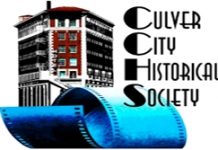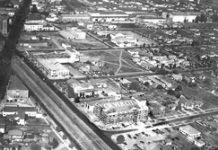History tends to be very dry unless we know about the ideals and personalities of those who came before us. Fortunately for Culver City, Patricia Culver Battle, Harry Culver’s only child, shared detailed insights into the man she called “Father.” Pat, who was called “Little Darling” by her father, often stressed that his interests were many and his work ethic and respect for others, and the military, were learned at home.
On Jan. 22, 1880, Jacob and Ida Culver welcomed the birth of their third child in Milford, Nebraska. The little boy, Harry Hazel Culver, grew up as the middle child of five, an energetic, responsible child by all accounts. Harry Culver arrived in California in 1910, with a history that already included riding 4,120 miles in a 53-day bicycle endurance race that ended at New York’s Madison Square Garden. He served as a trumpeter in the Spanish-American War, attended to his scholarly pursuits, took in laundry to support himself and ventured into a bottled water business with his father. The young Culver worked for the Customs Bureau, in real estate, and for the Manila Times before coming to California.
Harry Culver’s job with I.N. Van Nuys pointed to his feel for real estate, so he ventured out on his own. Culver’s early ads read “All Roads Lead to Culver City.” He saw the importance of this location, halfway between the Story Building in Los Angeles and Abbot Kinney’s “Venice of America.” He touted the temperate climate and the advantage of existing transportation routes. Culver enticed emerging filmmakers as part of the commercial base for his balanced community. Culver announced his plans at the California Club in 1913 to attract the necessary partners. The result? Culver City incorporated in September 1917.
Harry Culver, who loved the movies, married an actress Lillian Roberts, who was under contract to Thomas Ince. Ince built the two major studios that still exist here. We know that Culver was a great sportsman and accomplished horseman who also played golf. He sponsored marathons and owned a hockey team, and he took his family to Yankee Stadium, The Culver City Boxing Arena, and wrestling matches.
Family was very important to Culver. They flew out of the Culver City Airport in his “Stinson Detroiter.” Culver’s rise to head the national real estate association meant giving 640 speeches during his year as president.
Although Harry H. Culver had a sales force of hundreds, his daughter did not see him as a super salesman, but as someone who simply “knew what people wanted.” And what did he want? According to Patricia, he wanted a balanced community, where families could thrive. Sounds like home!
Visit the Culver City Historical Society Archives in the Veterans Memorial complex to learn more, as the city nears its Centennial.














